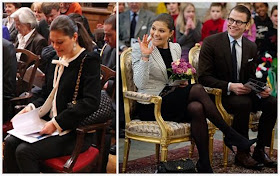I have had many, many requests for more reader polls on tiaras, specifically polls to pick favorite tiaras in individual categories (like gemstones or types of tiaras). So, all right. Let's do it. YOU'VE WORN ME DOWN, you scamps.
You indulged me by viewing
my personal dream tiara collection, now let's do one for you lot. All of you, collectively. Once a month or so, I will throw out a category (determined by moi) and you can vote for your favorite tiara in that category. By the end of it all, the results will make up a Readers' Ultimate Tiara Collection of sorts. Okay? Okay.
As I argued in my own collection write ups, a great tiara collection needs a fringe tiara of some sort. It's just too much of a classic design to ignore. (Luckily for those of you that hate fringes, there are plenty of design options to choose from.) I've also received a lot of requests for a post comparing and contrasting the many, many diamond fringe tiaras out there. So let's shoot two birds with one stone and start with this:
Pick your favorite diamond fringe tiara!
The fringe tiara style gained popularity in Russia, where it resembled the traditional kokoshnik headdress. The style became popular around the world, and there are countless tiaras out there in some sort of fringe design. They are often all diamond, and the style is also popular as necklaces - many of the fringe tiaras can convert to necklaces, though this is not always true.
 |
| Empress Marie Feodorovna, in a fringe tiara/kokoshnik |
The classic fringe tiara can be hard to tell apart from its fringe tiara friends. It is a design dominated by tall diamond posts, large uprights that typically graduate in size (the tallest in the middle of the tiara, the smallest at the ends). These are separated by smaller spikes of diamonds in a different design, often circular or square shaped diamonds.
Classic fringe examples:
6. A fringe formerly belonging to Queen Maria of Yugoslavia
The design of these smaller spikes and the angle and size differentiation between the large uprights is one way to tell fringe tiaras apart, though at times it can be necessary to actually count the diamonds to differentiate between these classic examples.
More classics:
1. Queen Sirikit of Thailand's flexible fringe, which can be worn halo-style, or in a more traditional mode (and also as a necklace, like many other tiaras here)
2. Grand Duchess Elena Vladimirovna, Princess Nicholas of Greece and Denmark, and her fringe
3. The Sayn-Wittgenstein-Berleberg Fringe
4. A fringe that belonged to Queen Alexandrine of Denmark, now worn by Countess Sussie of Rosenborg, which almost entirely eliminates the shorter spikes
There are also numerous variations on this classic design out there. Some are only a slight variation, and others stretch the definition of a "fringe" pretty far. Where you draw the line - what is and what is not in the fringe category - is up to you.
Some go pointier, really tapping into the sun ray description often used for fringe tiaras.
The Baden Fringe Tiara, on the left above, has less of a differentiation between the design of the tall and short spikes; the sun ray tiara owned by Queen Victoria (later put on another tiara base by her daughter, Princess Beatrice, seen above right) omits alternating heights for its spikes.
Others round out the spikes.
Queen Alexandra's Kokoshnik Tiara (above left) is the best example of this, though
the fringe from Monaco also has some rounded details at the ends (above right).
Some add more design to the spikes, like the
Kent Diamond and Pearl Fringe (above left), the now
dismantled Surrey Fringe (above right), or
Sweden's Modern Fringe (above below).
Other fringe tiaras prefer a skinnier version of the spikes, like tiaras worn by Queen Noor of Jordan (above left) or Crown Princess Masako of Japan (above right, in a pearl-topped sunburst tiara formerly worn by her mother-in-law). These are getting away from what we typically label as a fringe tiara - but again, where the line is drawn is up to you.
And that's just some of the fringe tiaras out there. It's a big, big pool to swim in - and I'll leave the rest to you.
Right, so, ready to vote for your favorite? Here's what you do:-Vote for
one tiara in the comments. (If you're mentioning multiple tiaras in your comment, indicate which one gets your vote, or I will just count the first one.)
-I will also count the number of "likes" or up arrows on those comments, so you can vote that way too.
-Non-royal tiaras and tiaras that no longer exist are fair game too.
We'll be back with new stuff on Thursday.
Photos: Wikipedia/Geoffrey Munn/Getty Images/Scanpix/Christie's/Kungahuset/Royal Collection





















































